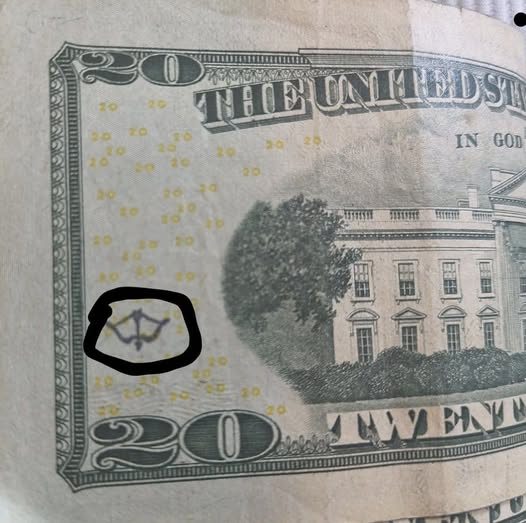At first glance, a U.S. dollar bill might seem like a simple piece of currency—green ink, familiar portraits, and official emblems we’ve seen countless times. But sometimes, if you look closely, you’ll notice something out of the ordinary: a small stamp, an unfamiliar symbol, initials, or even something that looks like a tiny logo.

These unusual additions, often overlooked by casual observers, are called chop marks. Though small and subtle, these marks carry a fascinating backstory. They are visual clues to the long, winding journey a single bill may have taken across borders and through countless hands around the globe. Chop marks are most commonly found on U.S. bills that have traveled internationally, especially to places where the U.S. dollar is favored in everyday transactions. These marks are not graffiti or random scribbles. Instead, they are carefully placed stamps made by merchants, money changers, or financial workers in foreign countries to indicate that a bill has been checked for authenticity.
In parts of the world where counterfeit currency is a serious concern and where formal banking systems may not always be trusted or widely available, these marks act as a kind of informal verification system. They show that someone—often a professional whose livelihood depends on being able to spot fakes—has examined the bill and found it to be genuine. A single bill might accumulate several chop marks during its lifetime, with each mark symbolizing a stop along its financial journey and a layer of trust earned. The origins of chop marks go back centuries, with roots in ancient China. The term “chop” itself comes from the Chinese practice during the Ming and Qing dynasties when silver coins were routinely stamped by money handlers to confirm their weight and authenticity. These stamps served as a guarantee to others in the economy that the coin was legitimate and could be trusted in trade. This practice later spread to other parts of the world through trade routes and became integrated into various cultures and economies.
As American currency became increasingly popular in international markets—thanks to its stability and global acceptance—foreign merchants in regions like Southeast Asia, the Middle East, Latin America, and Africa began applying their own chop marks to U.S. dollars. This tradition continues today, particularly in cash-heavy economies where trust between buyer and seller is critical. The reasons for using chop marks are practical and rooted in the realities of global commerce. First and foremost, a chop mark acts as authentication—it tells the next person handling the bill that someone else has already confirmed its validity. Second, it serves as a kind of provenance, offering a glimpse into where the bill has been. Lastly, it plays a vital role in building trust in informal economies, where relationships often matter more than institutions.
These small stamps are reassurance in places where financial transactions are built on personal experience and reputation. Chop marks can take many forms. Some are tiny symbols like arrows, stars, or birds. Others are letters, stylized initials, or monograms. In some regions, particularly Southeast Asia or parts of Africa, unique icons like bows and arrows or geometric shapes are common. The ink used is typically red, blue, or black, chosen not to interfere with the bill’s design or essential features such as serial numbers and security threads. The placement of the mark is usually intentional and respectful, ensuring the bill remains usable while also bearing the sign of inspection. In terms of legality, chop marks fall into a gray area. U.S. law prohibits defacing or mutilating currency to the point that it can no longer be used. However, because chop marks are generally small and don’t affect the bill’s function, they are not considered illegal. That said, heavily marked bills might still be rejected by ATMs or cautious businesses simply because they don’t fit the typical appearance of clean, unmarked cash. Still, each of these marks tells a story. When you find a dollar with a mysterious stamp or symbol, you’re holding more than just money. You’re holding a record of the bill’s international journey, its acceptance by merchants across borders, and its role in countless transactions worldwide. Each mark is a testament to the global reach of the U.S. dollar and a quiet reminder of the invisible paths money travels in connecting people, economies, and cultures. So the next time a marked bill passes through your hands, take a moment to appreciate it—not just as currency, but as a piece of history that speaks volumes in silence.





